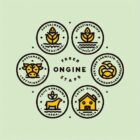Why Qualifying for Food Stamp Program Is Possible?

You might think that qualifying for the food stamp program is impossible, but let us assure you, it is indeed possible! In this article, we will debunk misconceptions and guide you through the eligibility criteria, income and asset requirements, and application process.
We will show you how to maximize your benefits and resources, making access to this vital program a reality for you and your family.
Key Takeaways
- Eligibility for the food stamp program is determined by meeting income and resource limits set by the government.
- Food stamp recipients are not only unemployed individuals, as many working individuals and families also qualify for SNAP benefits.
- The application process for the food stamp program requires gathering necessary documents, completing the application accurately, and submitting it online, by mail, or in person.
- To maximize benefits and resources, individuals can understand program guidelines, utilize online tools to estimate potential benefits, plan grocery shopping carefully, and explore other assistance programs such as school lunch programs and food banks.
Understanding the Eligibility Criteria
To understand the eligibility criteria for the food stamp program, you need to know if you meet the requirements. The goal of the program is to assist low-income individuals and families in accessing nutritious food.
To be eligible, you must meet certain income and resource limits set by the government. These limits vary depending on the size of your household. Generally, your income must be at or below the federal poverty level. Additionally, you must be a U.S. citizen or a qualified non-citizen to qualify for the program.
It’s important to note that receiving other forms of government assistance, such as Temporary Assistance for Needy Families (TANF), doesn’t automatically make you eligible for food stamps. However, these factors are taken into consideration when determining eligibility.
To apply for the program, you’ll need to provide documentation to verify your income, assets, and household composition. It’s recommended to contact your local Department of Social Services or visit their website to obtain the specific requirements and application process for your state.
Understanding the eligibility criteria is essential in determining if you qualify for the food stamp program and can help ensure you have access to the support you need.
Debunking Misconceptions About Food Stamps
You may have heard misconceptions about food stamps, but let’s debunk them and set the record straight. Here are three common misconceptions about food stamps:
- Food stamps are only for the unemployed: This isn’t true. The Supplemental Nutrition Assistance Program (SNAP), commonly known as food stamps, is designed to help low-income individuals and families, regardless of employment status. Many working individuals and families qualify for SNAP benefits because their income falls below the eligibility threshold.
- Food stamps are a form of government handout: While it’s true that SNAP benefits are provided by the government, they aren’t simply handouts. SNAP is a safety net program that aims to alleviate food insecurity for those who are struggling financially. It’s funded through taxpayer dollars and plays an important role in ensuring that vulnerable populations have access to nutritious food.
- Food stamp recipients abuse the system: This is a common misconception fueled by stereotypes. While there may be isolated cases of fraud or abuse, the majority of SNAP recipients use the benefits responsibly and genuinely need assistance. Strict monitoring and eligibility requirements help prevent abuse and ensure that benefits are distributed to those who truly need them.
Exploring Income and Asset Requirements
Exploring the income and asset requirements is essential in determining eligibility for the food stamp program. This program, officially known as the Supplemental Nutrition Assistance Program (SNAP), aims to provide assistance to low-income individuals and families to ensure they have access to nutritious food. To qualify for SNAP benefits, there are specific income and asset limits that applicants must meet.
In terms of income requirements, the eligibility is based on the gross and net income of the household. Gross income includes all earned and unearned income, such as wages, self-employment income, and government benefits, while net income is the amount left after deducting certain expenses, such as housing and childcare costs. The income limits vary depending on the household size, with higher limits for larger households.
Asset requirements also play a role in determining eligibility for SNAP benefits. However, these requirements vary by state. Generally, households must have assets below a certain threshold, such as cash, bank accounts, and vehicles. However, certain assets are exempt from consideration, such as the value of a primary residence and most retirement savings.
It is important to note that income and asset requirements are just one aspect of determining eligibility for the food stamp program. Other factors, such as citizenship status and work requirements, also come into play. Understanding these requirements can help individuals and families determine if they qualify for SNAP benefits and access the support they need to meet their nutritional needs.
Navigating the Application Process
When applying for the food stamp program, it’s important to understand how to navigate the application process. This process can seem overwhelming, but with the right information and preparation, you can successfully complete your application and increase your chances of qualifying for the program.
Here are some key steps to help you navigate the application process:
- Gather necessary documents: Start by gathering all the required documents, such as proof of income, identification, and residency. Having these documents ready will make the application process smoother and faster.
- Complete the application accurately: Take your time to carefully fill out the application, providing accurate information about your household size, income, and expenses. Any errors or discrepancies could delay the processing of your application or result in denial of benefits.
- Submit your application: Once you have completed the application, submit it as soon as possible. You can submit it online, by mail, or in person, depending on the options available in your state.
By following these steps, you can navigate the food stamp application process with confidence.
Maximizing Benefits and Resources
To get the most out of the food stamp program, it’s essential to make the most of available benefits and resources. Maximizing these benefits can help ensure that you have enough food on your table and can meet your nutritional needs.
One way to maximize your benefits is by understanding the program’s guidelines and requirements. Familiarize yourself with the income limits and eligibility criteria to ensure you qualify for the maximum amount of assistance available to you. Additionally, take advantage of resources such as online tools and calculators that can help you estimate your potential benefits.
Another strategy is to carefully plan your grocery shopping. Make a list of the items you need and stick to it to avoid impulse purchases. Look for sales, use coupons, and compare prices to stretch your benefits further. Consider joining a food cooperative or community garden to access fresh, affordable produce.
Lastly, explore other assistance programs that can complement your food stamp benefits, such as school lunch programs, food banks, and local social services. By making the most of available benefits and resources, you can ensure that your food stamp benefits go a long way in providing for yourself and your family.
Frequently Asked Questions
Can Non-U.S. Citizens Qualify for the Food Stamp Program?
Yes, non-U.S. citizens can qualify for the food stamp program. Requirements include meeting income and residency criteria. The program aims to assist those in need, regardless of citizenship status.
Are There Any Restrictions on the Types of Food That Can Be Purchased With Food Stamps?
There are some restrictions on the types of food you can purchase with food stamps. Items like alcohol, tobacco, and hot prepared food are not allowed, but most other food items are eligible.
Can College Students Qualify for the Food Stamp Program?
Yes, college students can qualify for the food stamp program. The program assesses eligibility based on income and other factors. So, if you meet the criteria, you could receive assistance.
Is There a Limit to How Long a Person Can Receive Food Stamps?
There is a time limit to receiving food stamps, but it varies by state and individual circumstances. It’s important to stay informed about the specific rules and eligibility requirements in your area.
Can Individuals With a Criminal Record Qualify for the Food Stamp Program?
Yes, individuals with a criminal record can qualify for the food stamp program. The program does not have specific restrictions for people with criminal backgrounds. However, eligibility requirements vary by state.



